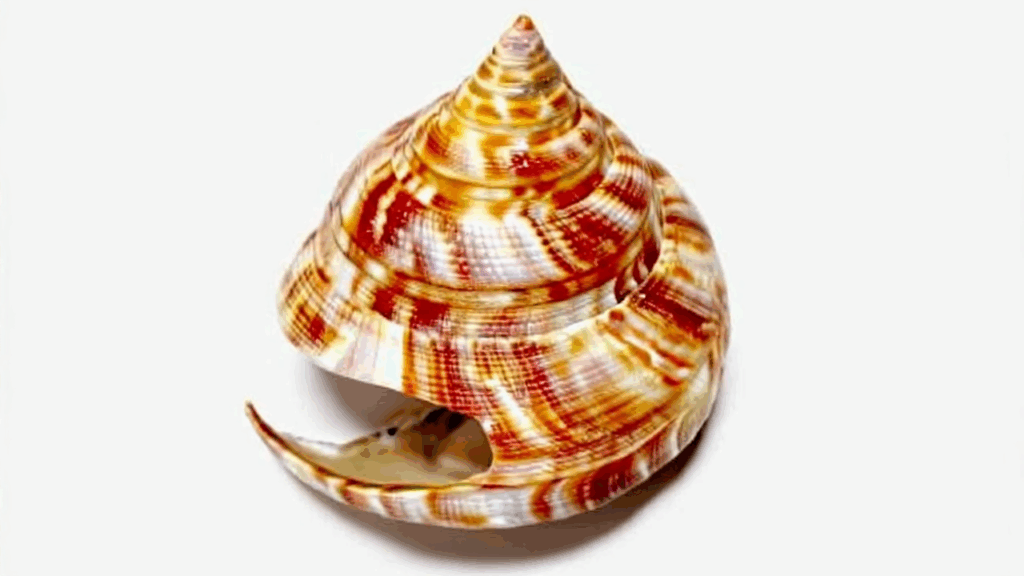Exploring Ancient Sea Snails for Curious Kids and Classrooms
What Are Slit Shells?
If you’ve ever picked up a seashell and wondered what stories it could tell, slit shells are among the oldest storytellers of all.
Belonging to the family Pleurotomariidae, these rare sea snails have been around since the Cambrian Period — that’s over 500 million years ago! They’re sometimes called living fossils because their ancestors once filled ancient oceans long before the dinosaurs ever walked the Earth.
Today, only about 16 species still exist, living quietly in deep waters—sometimes as far down as 1,500 to 2,000 feet below the surface. Their most distinctive feature is a small slit or groove that runs along the edge of the shell. This isn’t for decoration—it actually helps them breathe by letting water flow over their gills.
For homeschool families and teachers, slit shells are a fascinating way to bring marine biology, earth science, and even art together. They combine the wonder of natural history with lessons in adaptation, evolution, and beauty.
The Slit Shell Family (Pleurotomariidae)
The Pleurotomariidae, also known as the slit shells, are part of an ancient mollusk lineage that has survived multiple mass extinctions. Fossils of their relatives appear in rocks from the Paleozoic Era, and living species have changed very little since then.
- Habitat: Deep ocean floors near coral or rocky slopes
- Diet: Mostly vegetarian—they scrape algae from rocks
- Range: Found from Japan to Western Australia and South Africa, all the way to the Caribbean
Special Feature: The spiral slit (called a selenizone), which allows waste water to escape without disturbing the snail’s respiration
Because they live in such deep water, slit shells are rarely seen by divers or collectors. Most are discovered by accident—brought up by deep-sea trawlers or research expeditions.
If you’re teaching marine ecosystems, slit shells are a great example of how ancient lineages can adapt and survive in specialized niches for millions of years.
Perotrochus hirasei – The Emperor’s Slit Shell

Discovered: 1903 by Pilsbry
Found in: Japan and Taiwan
Size: Up to 4 inches (10 cm)
Known as “The Emperor’s Slit Shell,” this species is both strikingly beautiful and scientifically important. Its thick, cone-shaped shell has a latticed pattern created by fine spiral ridges and beads. The colors range from creamy ivory to deep red-orange, arranged in irregular streaks that look almost like brushstrokes of fire.
Collectors once nicknamed it the Millionaire’s Shell because of its beauty and rarity—sometimes fetching high prices among conchologists (shell collectors).
Teaching Connections:
- Science: Study how color patterns in shells can help camouflage or confuse predators.
- Art: Use watercolor or clay to recreate its spiral design and flame-like streaks.
- Geography: Locate Taiwan and Japan on a map and discuss the surrounding ocean currents that shape these marine habitats.
Perotrochus africana – The African Slit Shell
Described: 1948 by Tomlin
Found in: South Africa
Size: Up to 5 inches (13 cm)
The African Slit Shell is lighter and thinner than its Asian cousins. Its pale beige shell glows with hints of orange, with two fine spiral bands winding gracefully around its surface. These bands trace a journey from the base to the tip—like the growth rings of a tree telling the story of its life.
Fun Fact for Kids:
Every time the snail grows, it adds a new layer to its shell—so when you count the spirals, you’re looking at its growth history!
Teaching Connections:
- Biology: Compare its shell thickness to P. hirasei to discuss how water pressure affects shell design.
- Math: Measure and graph shell diameter growth using photos or illustrations.
- Social Studies: Explore South Africa’s ocean ecosystems and conservation efforts.
Perotrochus tangaroana – The West Australian Slit Shell
Named by: Bouchet & Métivier, 1982
Found in: Western Australia
Depth: Up to 1,500 feet (450 m)
Size: Up to 5 inches (13 cm)
This species, once known as P. westralis, lives in the dark depths off Australia’s western coast. Its creamy white to beige shell is faintly streaked with orange, and its spiral is tall and elegant—almost like a seashell version of a lighthouse tower.
Because it lives so deep underwater, sunlight never reaches it. Scientists believe the muted color tones may help it blend into its dim surroundings and conserve energy.
Teaching Connections:
- Earth Science: Discuss how sunlight, temperature, and pressure change with ocean depth.
- STEM Activity: Build a simple model to show how pressure increases with depth (using water and balloons).
- Writing Prompt: “Imagine you’re a slit shell living 1,500 feet below the surface—what would you see?”
Learning About Evolution Through Slit Shells
Slit shells are living fossils, and their story helps students grasp the concept of evolutionary survival.
Despite dramatic changes in Earth’s oceans over millions of years, these creatures have remained almost unchanged—proof that sometimes, nature gets the design just right.
If you’re teaching evolution or geology, slit shells make a perfect example of stability in design across deep time.
Extension Ideas for Homeschool or Classroom:
- Timeline of Life: Place slit shells alongside dinosaurs, trilobites, and humans to visualize evolutionary history.
- Shell Comparisons: Contrast a slit shell with a modern snail or conch. What’s similar? What’s different?
- Ocean Zones Chart: Label the “sunlight,” “twilight,” and “midnight” zones and place slit shells in their correct depth.
Wrapping It Up
Slit shells are a rare glimpse into our planet’s ancient past. From the colorful Emperor’s Slit Shell to the ghostly West Australian, each tells a unique story about adaptation and survival in the deep sea.
For homeschoolers and teachers, they’re a treasure trove of cross-disciplinary learning:
- Science: marine biology and evolution
- Math: measurement and pattern recognition
- Art: texture, pattern, and symmetry
- History: studying ancient life and fossils
These elegant shells remind us that even in the quiet, dark places of the world, life has a way of crafting beauty that endures through the ages.